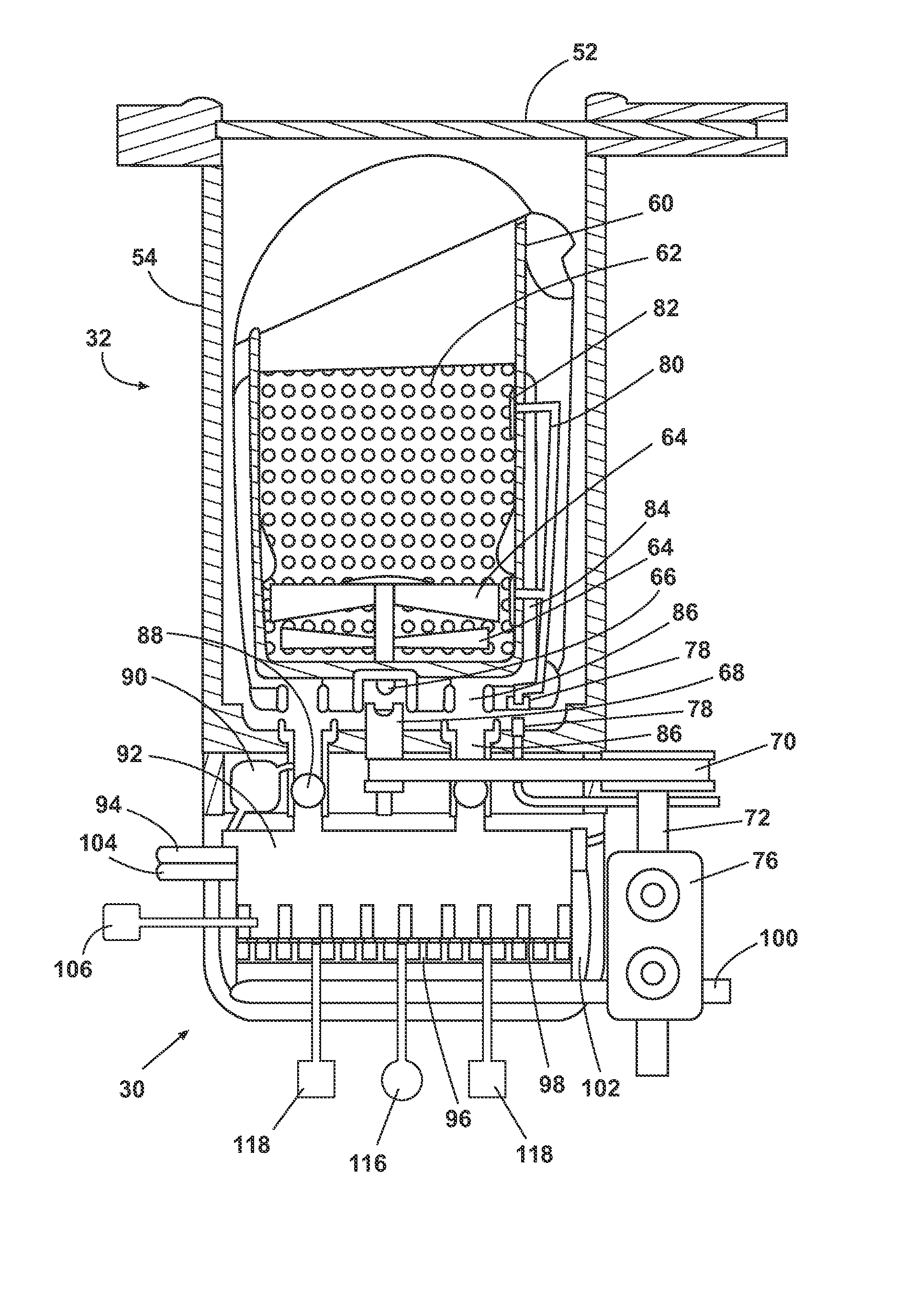[0009] It is an object of the present invention or inventions to improve on the prior art. Another object of the invention is to reduce the extent to which odors and tasks such as moving, separating or storing organic waste cause people to be frustrated with organic
waste management and recycling. The inventor has discovered that for users to be satisfied with, and fully participate in, an organic
waste management and recycling process, most users need to have the
sight, smell and bulk of raw organic waste immediately removed from their living or
working space. Accordingly, another object of the inventions is to provide one or more devices or processes for converting raw organic waste into a less offensive state or outcome, and to provide further processes for handling or using the outcome. The following summary describes various features of the inventions to aid in understanding the exemplary embodiments described later, but does not define or limit the invention which may reside in a combination of some or all of the elements or steps described in this section or other parts of this document.
[0010] In some aspects, the invention relates to converting organic waste into one or more manufactures, materials or compositions of matter, which will be called outcomes. An outcome is created and exists at an
intermediate point in time between when a person or
machine deems the
organic matter to be waste and when the matter is disposed of or input into a process for using it, for example for compost, fuel or some other purpose. The outcome is more convenient and less offensive for users to deal with than raw organic waste. In particular, the outcome may be one or more of less smelly, more compact, lighter, cleaner to
handle, more visually attractive or easier to handle or store. For example, the outcome may be dried pieces of organic waste, each piece having no dimension longer than a few cm. Or the outcome may be a
solid of substantially fixed shape, for example a
brick, granule, pellet, sheet or disc etc., made of substantially dry pieces or
organic matter. The pieces may be held together with a biodegradable or compostable binder or may be closely packed or compacted. Further optionally, the solids may be in a generally uniform or modular shape and size, may contain masking odors, or may be
colored. The outcomes are sufficiently dry to prevent or at least substantially reduce microbial growth and its related odors. The outcomes remain substantially free of microbial growth for a useful period of time, for example between a few days and up to about one month, if kept out of contact with rain or soil but can be decomposed intentionally. Such outcomes may be enjoyable to handle, leave minimal residue on the hands, and be efficiently packed for removal to the curb or other destinations. The outcomes are more convenient to handle and less offensive than raw organic waste and so encourage users to divert organic waste from other garbage and to participate in composting or other programs. The outcomes can also be kept in the home or garage for extended periods of time, for example from a few days to about a month or more, without creating intolerable odors and so may allow the user to take garbage out less often than once a week at a savings of inconvenience to the user and cost to the municipality.
[0012] In other aspects, the invention relates to one or more apparatuses capable of performing a
waste processing process, such as one or more of the processes described above. In some cases, an apparatus has a
processing module and a receiving module. The processing module may be stationary or temporarily stationary, may have one or more of electrical, water, drain and venting connections and some or all of the machinery necessary to perform one or more of the processes described above, and may be adapted to temporarily store raw or partially processed organic waste or outcomes. The receiving module may be portable, is adapted to receive organic waste, may have some of the machinery necessary to perform one or more of the processes described above, and may be adapted to temporarily store raw or partially processed organic waste. When the receiving module is connected to the processing module, the organic waste may be transferred to the processing module and one or both modules may be operated to perform a
waste processing process such as one or more of the processes described above. The processing module may be freestanding, for example resting on a countertop or on a floor. Optionally, the processing module may be located below a sink and the receiving module and processing module may interface through a hole in the sink, for example a conventional drain opening. Further optionally, a conventional under sink garbage disposer may be used to provide an input to a processing module. The processing module may also be built into a cabinet unit or a unit containing other appliances. The receiving module and processing module may also be integrated into a single unit. Such apparatuses provide a means for users to quickly and easily convert objectionable raw organic waste into one or more of the outcomes.
[0014] In other aspects, the invention provides one or more processes or methods for handling or extracting value from the outcomes. In some cases, the outcomes are used privately, for example by placing them in a garden or compost
pile. In other cases, the outcomes are collected for use in municipal composting programs. In other cases, a user may trade the outcomes to an organization in return for credits, money or other consideration. The qualities of the outcomes facilitate storing, collecting or transporting them.
 Login to View More
Login to View More 


